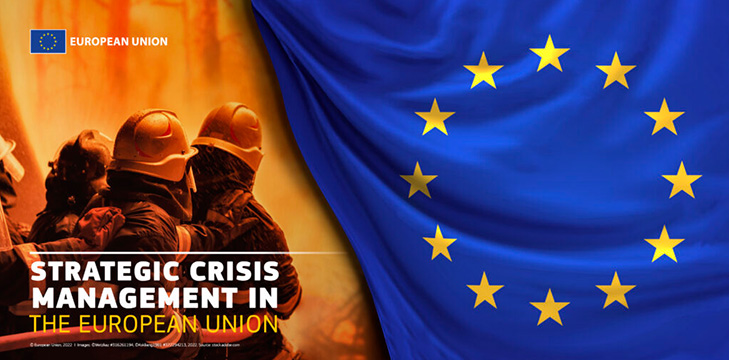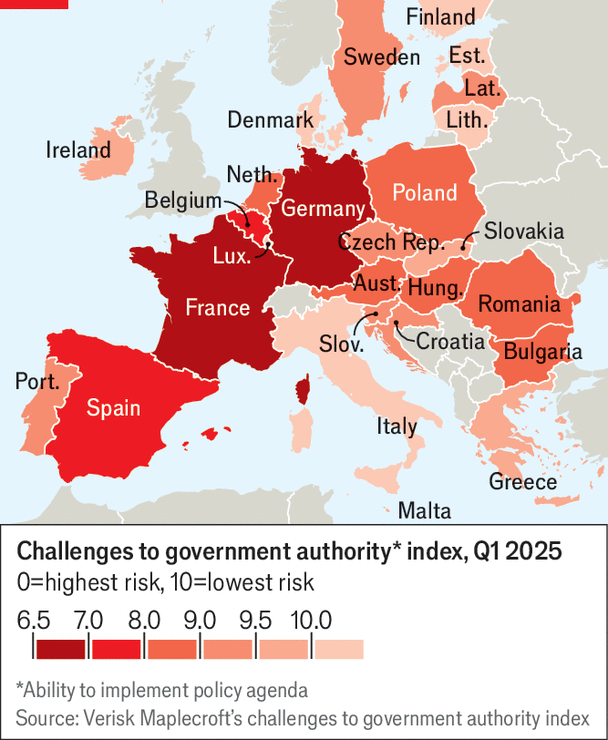
The European continent is at its most vulnerable in decades. For Europe, this will be a year of crisis management, notes ‘The Economist’.
The next crisis will be harder, in part because the nature of the threats facing Europe has changed. America and China will soon share disdain for the EU and global rules. Their leaders will have no problem tying together economic and security matters for maximum leverage, as is illustrated by Donald Trump’s promise to use tariffs and possibly even force to induce Denmark to hand over Greenland. International security has deteriorated to the point where European armed forces are being re-engineered, with bigger budgets.
Europe is acting from a position of weakness. Germany, its biggest economy, is entering its third year in recession. These threats and problems are dividing Europe along new lines. To see how, start with the continent’s economic difficulties. Weak economies are more likely to make poor geopolitical decisions.
During the euro crisis of the early 2010s, it was Europe’s periphery that was struggling. Southern European countries flogged visas to investors indiscriminately. Central and eastern European countries were more than happy to work with China in its “16+1” initiative, which sought to draw the region into Xi Jinping’s orbit. Now Europe’s core is suffering. It is not just Germany; the IMF also forecasts meagre growth for France and Italy.
Europe’s biggest countries will therefore have to steer the EU through dangerous times while trying to reform their own economies. In September Mario Draghi, a former president of the European Central Bank (ECB) and prime minister of Italy, laid out an ambitious reform agenda. Without agreement between France and Germany there is little hope for even the most modest of his proposals.
In the debate over the future of industrial policy and how best to respond to the provocations of Mr Trump, the big countries have very different incentives. Germany and the Netherlands conduct a lot of trade beyond the EU’s borders. The former continues to reject tariffs on Chinese-made electric vehicles for fear of retaliation against its carmakers; the latter had to be strong-armed by America into restricting exports of chipmaking equipment to China.
By contrast, France, Spain and Poland are much less exposed to international commerce, and as a consequence are more willing to sacrifice the gains of trade. Although the European Commission has agreed a trade deal with MERCOSUR, a South American group, it has not yet been ratified, and is being opposed by France and Poland. Such countries are also much more likely to argue in favour of European production of “strategic goods” and “buy European” clauses.
At first glance, the continent appears unified on defence. Now everyone agrees spending will have to rise beyond 2% or even 3% of GDP. That is a sizeable increase for a continent used to outsourcing its security to America.
But even here there are differences: not all countries are equally worried by Russia. Generally speaking, the closer a country’s capital is to Moscow, the higher both its military aid to Ukraine and defence spending. These differences will become a source of tension.
 Map: The Economist
Map: The Economist
Mr Trump has made clear that he expects nato members to raise spending to 5% of GDP if they wish to continue to benefit from American protection. The EU budget may need a large pot of €100bn ($103bn) for common outgoings on defence, up from €8bn at present, Andrius Kubilius, the EU’s first-ever commissioner for defence, has argued. An increase of that size would entail cuts to the bloc’s other spending commitments, or bigger contributions from all members.
Funding is another problem. Even before armed forces get their extra money, public debt in France, Italy and Spain exceeds 100% of GDP. Last year France ran a deficit of more than 6% of GDP.
The EU changed its fiscal rules. It now requires each country to put together plans for a more balanced budget, via either lower spending or higher taxes. The ECB, which is ultimately the backstop for all euro-zone government debt, has indicated that compliance with such rules is mandatory for any country hoping for its support. France, Italy and Spain will all have to adjust by about 0.5% of GDP a year, according to Bruegel, a think-tank. Arguments are on the way.
An economic downturn would make the arguments even more heated. The ECB is still battling inflation — with prices for services a particular problem, at 4% above a year ago — and as a result is reluctant to cut interest rates sharply. Euro-area household savings have risen to 16% of disposable income, up from 13% before the COVID-19 pandemic, hurting consumption.
Businesses are braced for the impact of Mr Trump, amid already intense competition from China. The euro zone may soon return to a familiar debate: should deficit spending be used to prop up an economy?
During the euro crisis, the EU overcame problems through deeper integration. Unthinkable policies, such as the ECB standing behind government debt and EU countries incurring common debt, became reality.
Europe’s politics is being pulled to the extremes. Germany will be consumed by an election until late February, with the likely result another constrained centrist coalition. In France Emmanuel Macron is struggling to form a stable government. Spain’s minority government cannot pass a budget. Indeed, in an unusual reversal, Italy is the bloc’s most stable big country.
On top of this, many of the EU’s problems touch upon matters at the heart of national politics: security, the state’s role and taxation. For Europe, this will be a year of crisis management.
read more in our Telegram-channel https://t.me/The_International_Affairs

 11:37 20.01.2025 •
11:37 20.01.2025 •






















